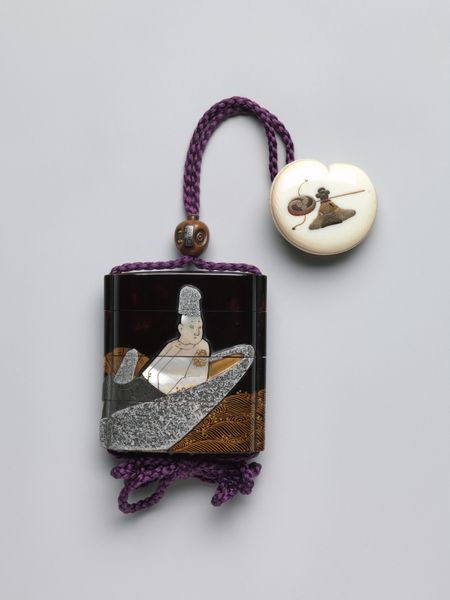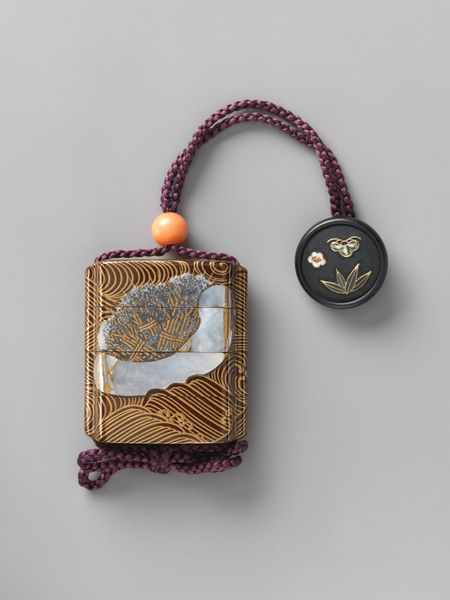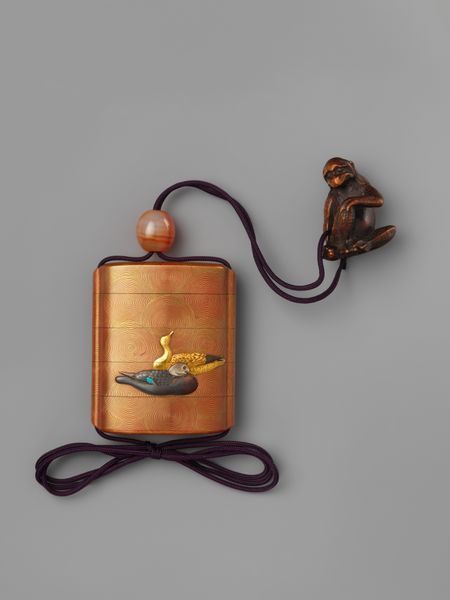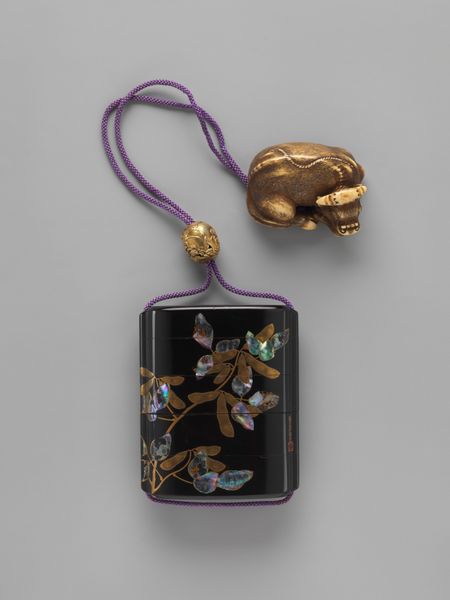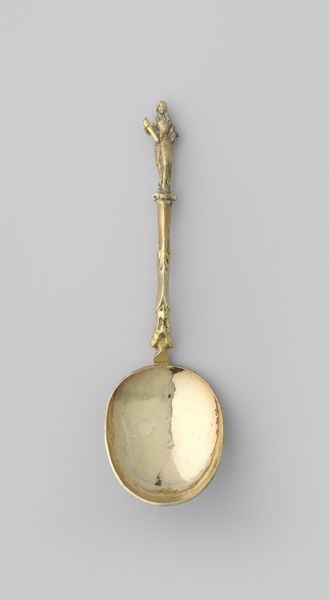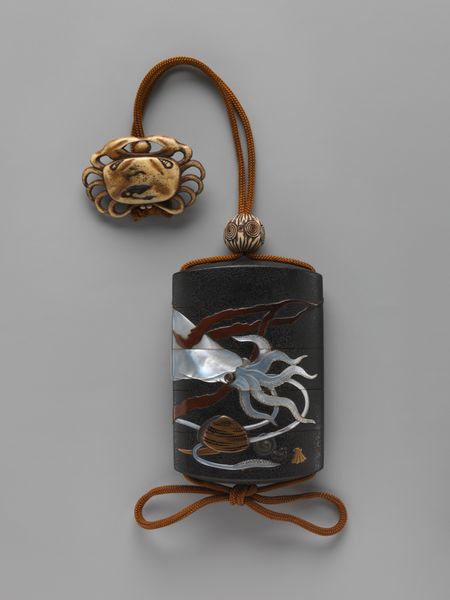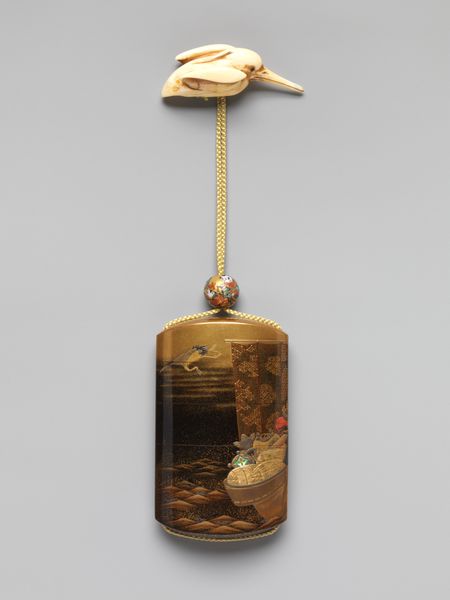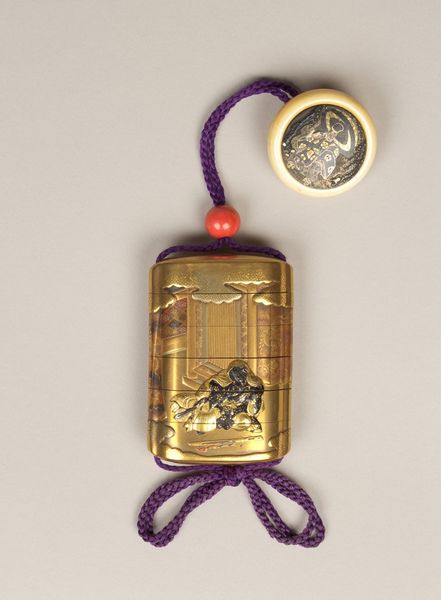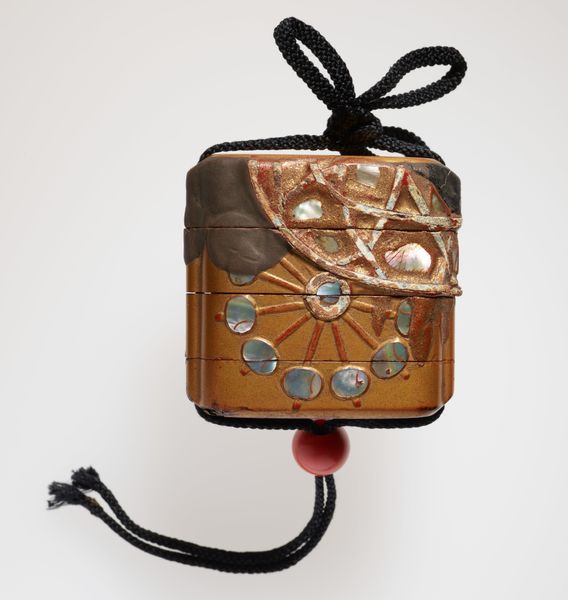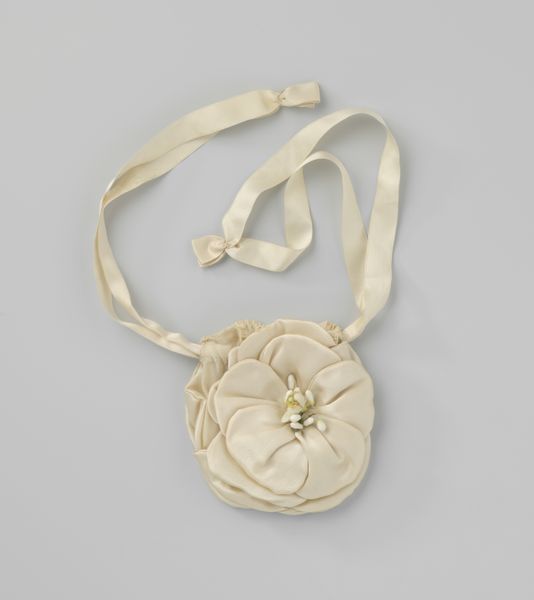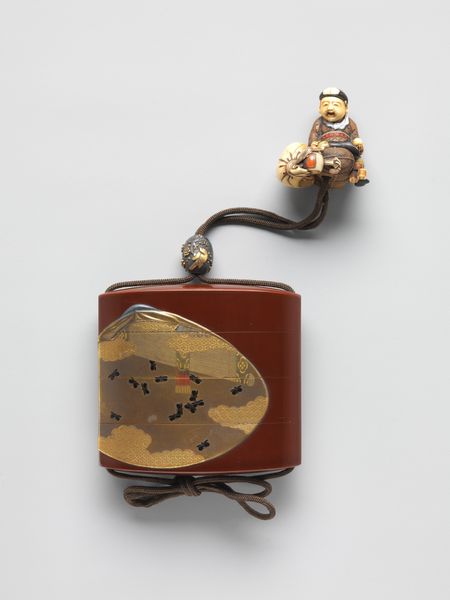
Inrō with Tanabata Story of the Weaver and the Herdboy 1800 - 1849
0:00
0:00
mixed-media, carving, wood, ivory
#
mixed-media
#
carving
#
asian-art
#
japan
#
geometric
#
wood
#
decorative-art
#
ivory
#
miniature
Dimensions: Overall (inro): H. 3 7/8 in. (9.8 cm); W. 2 11/16 in. (6.9 cm); D. 13/16 in. (2 cm) Overall (netsuke): H. 11/16 in. (1.7 cm); Diam. 1 11/16 in. (4.3 cm) Overall (ojime): H. 9/16 in. (1.5 cm); W. 9/16 in. (1.4 cm)
Copyright: Public Domain
Curator: I’m immediately struck by its shimmering surface – the iridescence gives it an almost ethereal quality. Editor: Indeed. What you're observing is an *inrō*, a traditional Japanese case, dating from the early 19th century, around 1800 to 1849, by the artist Kyūkoku. You can find it here at the Met. The materials are quite varied, employing mixed-media techniques including wood and ivory carving. Curator: Mixed media feels appropriate, considering how ornate it is. I also see a very prominent geometric aesthetic throughout, it also feels distinctly Japanese in terms of symbolism. Can you tell me more about its design? Editor: This *inrō* specifically depicts the Tanabata story. It’s a popular East Asian folk tale, typically involving the deities Orihime, a weaver, and Hikoboshi, a herdboy. Separated by the Milky Way, they are allowed to meet only once a year on the seventh day of the seventh lunar month. Curator: So it’s a narrative encased within a functional object, imbued with longing and perhaps a bit of cosmic irony? How very characteristic of so much art made during that period! The attention to detail is remarkable, every bit must carry a symbolic weight. Editor: The choice of ivory and wood also speaks volumes about the socio-economic context. Inrō were popular accessories among the samurai and merchant classes, so these pieces were more than just ornamental—they spoke to status and wealth within that society. Curator: It's quite small, but in the hand I bet it carries significant weight and implies quite a grand gesture of wealth or gift giving from patron to samurai. It creates quite the intimacy considering this narrative piece and geometric design that's been carefully pieced together by the artist! I admire how its decoration reflects the society it occupied. Editor: Absolutely, and the *inrō*, displayed today within the museum's collection, continues to tell a story. It links our own contemporary narratives about collecting with older customs of patronage and craftsmanship. Curator: A powerful object for reflection then—on love, on cultural history, and how art continues to be a conduit across time.
Comments
No comments
Be the first to comment and join the conversation on the ultimate creative platform.
